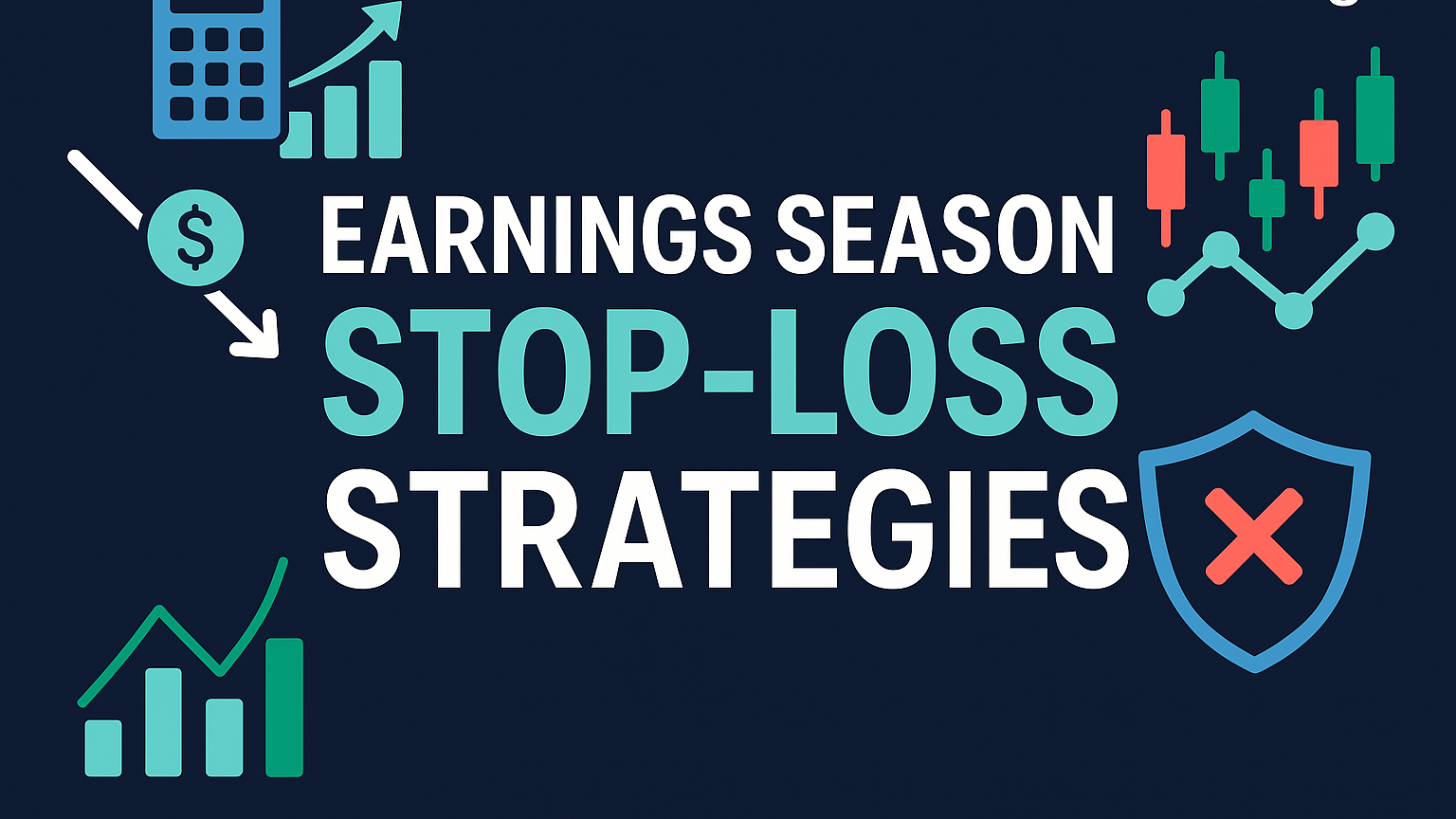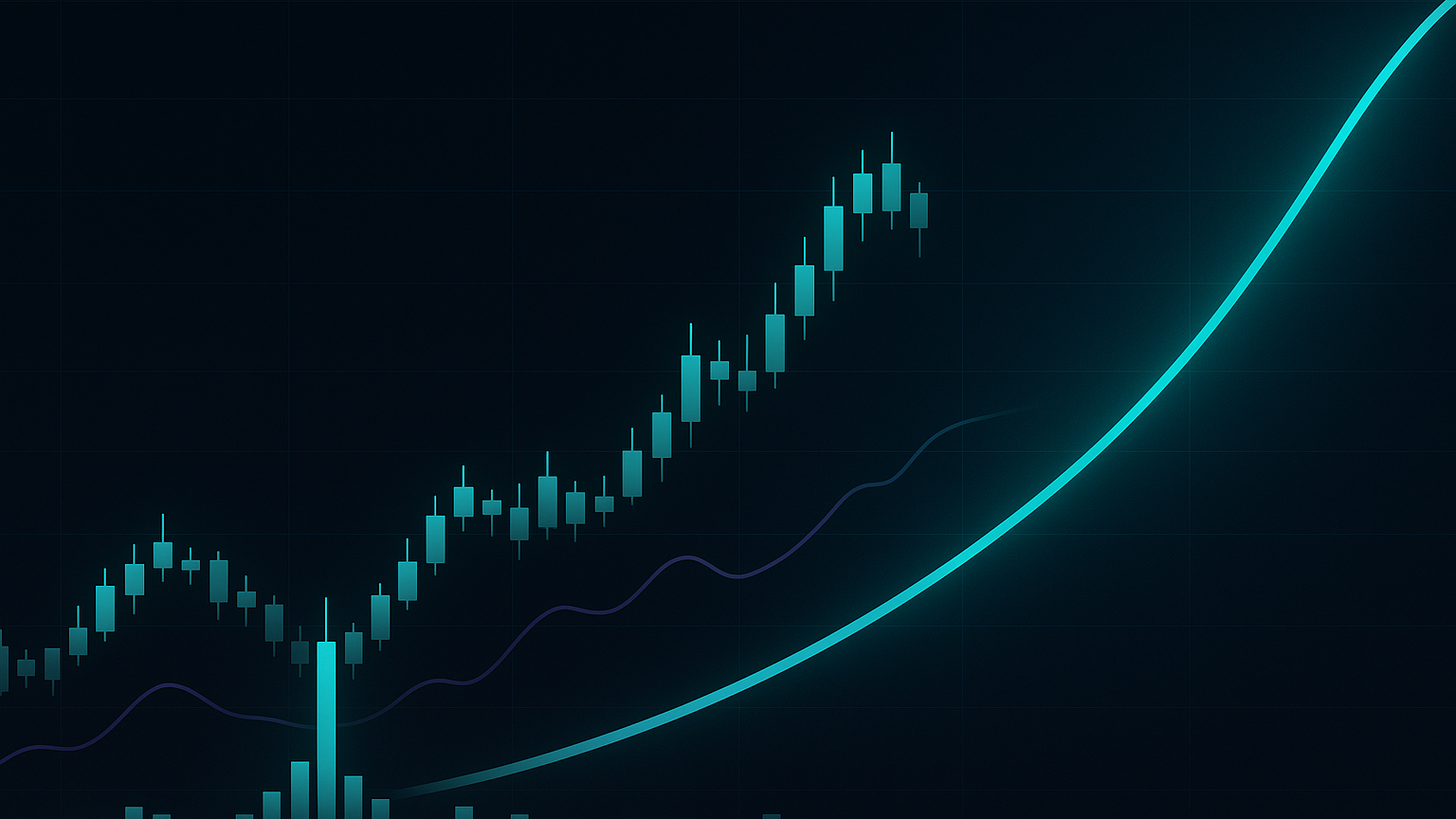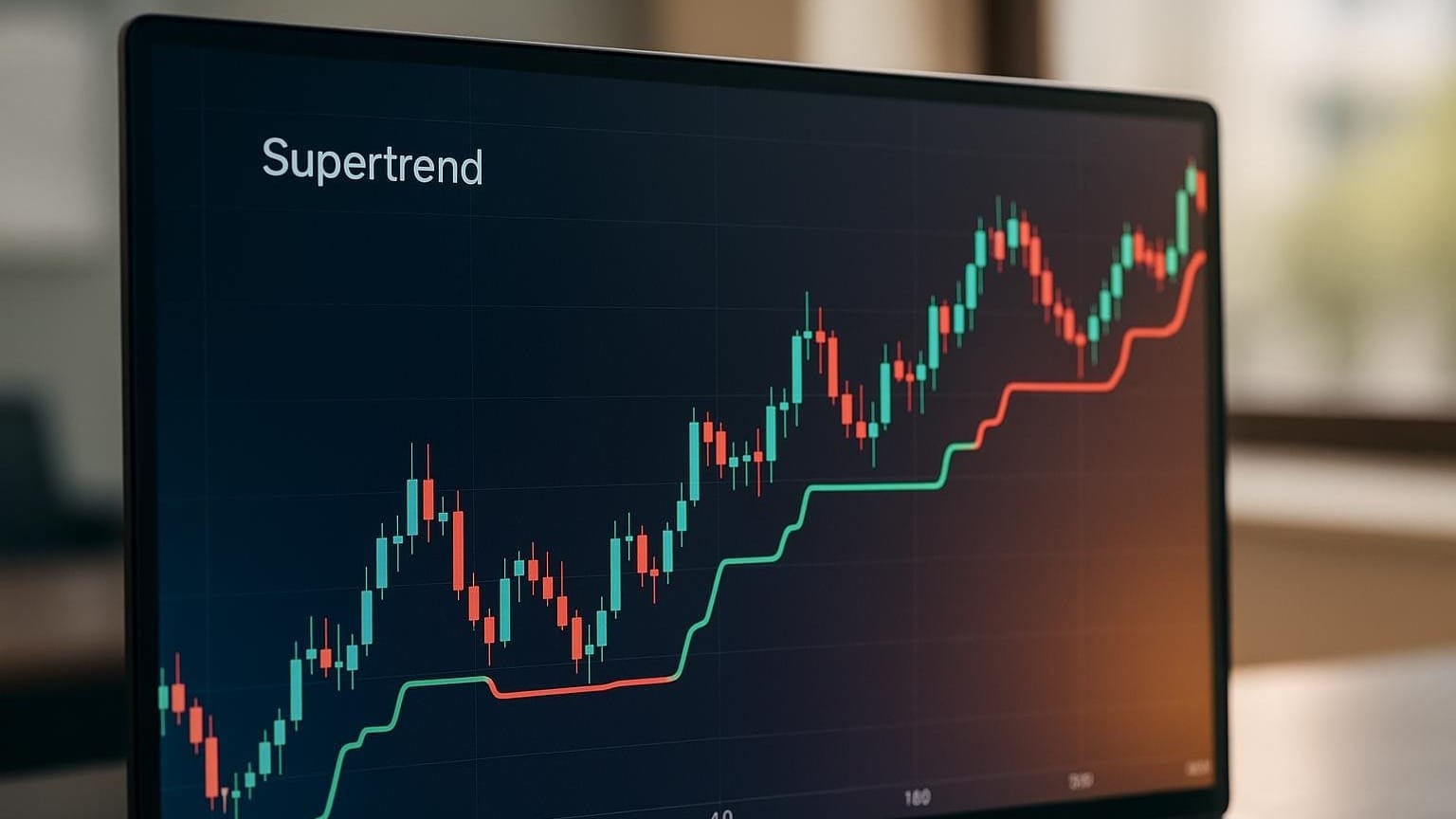Learn the 7 common mistakes traders make with moving averages in swing trading and how to avoid them for better results.
Moving averages are powerful tools in swing trading, but they can lead to costly errors if misused. Here are the 7 most common mistakes traders make and how to avoid them:
- Relying on One Moving Average: Using only one moving average limits analysis. Combine different timeframes (e.g., 20-day, 50-day, 200-day) for a clearer market view.
- Wrong Timeframe: Misaligned timeframes can hurt results. Match your moving averages to your trading goals and market conditions.
- Overloading Charts: Too many moving averages clutter charts and create conflicting signals. Stick to 2-3 key averages for clarity.
- Ignoring Price Trends: Moving averages lag behind price action. Use them with support/resistance levels and chart patterns for better signals.
- Not Adjusting for Volatility: Static settings fail in volatile markets. Shorten periods for high volatility and lengthen them for stable conditions.
- Choosing the Wrong Type: Simple, exponential, and weighted averages serve different purposes. Pick one based on your strategy and market behavior.
- Using Without Other Tools: Moving averages alone aren't enough. Combine them with indicators like RSI, Bollinger Bands, or volume for stronger confirmation.
Key Takeaway: Moving averages work best as part of a broader strategy. Keep your charts clean, adjust to market conditions, and always confirm signals with other tools.
1. Relying Too Much on One Moving Average
Focusing solely on one moving average can limit your market analysis and lead to missed opportunities. For instance, relying only on the 50-day moving average for crossover signals overlooks the broader market context and other confirmation tools.
To refine your trading approach, consider these strategies:
Use Multiple Timeframes
| Moving Average | Purpose | Best For |
|---|---|---|
| 20-day MA | Tracks short-term trends | Quick market reactions |
| 50-day MA | Captures intermediate trends | Timing positions |
| 200-day MA | Highlights long-term trends | Identifying support/resistance |
Combine Indicators
Platforms can allow you to pair moving averages with other tools for deeper analysis.
Adjust for Volatility
Adapt the period of your moving averages to match market conditions. Use shorter periods during high volatility and longer ones for stable markets.
Moving averages are most effective when used as part of a broader strategy. Pairing them with tools like RSI or Bollinger Bands can provide stronger confirmation signals and reduce the risks of relying on a single indicator.
However, using too many indicators can complicate your analysis—let’s dive into that challenge in the next section.
2. Not Considering the Right Timeframe
Picking the wrong timeframe for your moving averages can seriously hurt your swing trading results. While we’ve already discussed the risks of relying on a single moving average, using unsuitable timeframes can be just as damaging.
When it comes to swing trading, your timeframe choice should align with your trading goals and market conditions:
| Timeframe | Best Used For | Common Pitfalls |
|---|---|---|
| Daily Charts | Identifying primary trends | Overlooking short-term moves |
| 4-Hour Charts | Timing entries and exits | Getting distracted by small price swings |
| Weekly Charts | Confirming long-term trends | Too slow for swing trade signals |
In highly volatile markets, tweak your moving average timeframes to better capture rapid market changes. Tools can help pinpoint the most effective timeframes by analyzing volatility and trend patterns.
Key Timeframe Tips: Begin with daily charts to gauge overall trends, avoid excessive noise from very short timeframes (like 1-minute charts), align your timeframe with your planned holding period, and adjust based on market volatility.
For swing trades lasting 5–10 days, shorter moving averages—like the 20-day or 50-day—tend to work better than longer ones like the 200-day MA. Pairing moving averages with price action and other trend indicators gives you a clearer picture of market behavior.
"Using moving averages in conjunction with price action analysis and other trend indicators can provide a more comprehensive view of market trends" [1]
Always backtest your strategies in different market scenarios to ensure your chosen timeframes support your trading objectives. While selecting the right timeframe is crucial, overloading your charts with too many moving averages can create unnecessary confusion. Up next, we’ll dive into why simplicity matters.
3. Overloading Charts with Too Many Averages
When analyzing charts, keeping them simple is crucial for effective swing trading. Adding too many moving averages can clutter your view and make decision-making harder.
| Moving Average Setup | Recommended Use | Potential Issues |
|---|---|---|
| Basic (2-3 MAs) | Clear trend identification | - |
| Moderate (4-5 MAs) | Multi-timeframe analysis | Can complicate charts |
| Overloaded (6+ MAs) | Trying to catch all signals | Confusion, conflicting data |
Why Too Many Averages Are a Problem
Loading charts with excessive moving averages often results in conflicting signals. This can obscure market trends and delay your trading decisions.
Research indicates that using more than three moving averages tends to produce false signals, especially in volatile markets.
Better Moving Average Combinations
For swing trading, stick to combinations like:
- 10-day and 20-day MAs for short-term trends
- 20-day and 50-day MAs for medium-term trends
- Add a 200-day MA for confirming long-term direction
Focus on What Matters
Instead of overloading your charts, choose moving averages that align with your trading timeframe and strategy. Pay more attention to how these averages interact with price trends rather than focusing on how they overlap with each other. This keeps your analysis clear while still capturing key market movements.
Simplifying your charts is a step in the right direction, but overlooking price patterns can still lead to mistakes. Let’s dig into why this is important in the next section.
4. Ignoring Price Trends and Patterns
One common mistake traders make is overlooking price trends, which often leads to misreading moving average signals. Since moving averages lag behind actual price movements, they work best when paired with real-time tools like support and resistance levels or chart patterns.
| Analysis Component | Primary Function | Common Mistake |
|---|---|---|
| Moving Averages | Confirms overall trends | Using them without context |
| Price Action | Reflects market behavior | Overlooking critical levels |
| Support/Resistance | Highlights key levels | Missing potential reversals |
Why Price Action Comes First
Moving averages are far more effective when they align with the current price trend. Their signals become especially reliable when they match established trends and respect critical support or resistance zones.
The Role of Market Context
Successful traders don’t just rely on moving averages—they combine them with price action analysis to pinpoint strong entry and exit opportunities.
Key Price Patterns to Watch
Pay attention to trend direction, major support and resistance points, and chart patterns like head and shoulders or double tops. Volume confirmation can further validate these patterns, giving you more confidence in your decisions.
How to Combine Moving Averages and Price Trends
Before making a move based on a moving average, evaluate the following:
- The overall market trend
- Key support and resistance areas
- Possible reversal zones
- Volume activity supporting price moves
Think of moving averages as a confirmation tool rather than the sole basis for decisions. For shorter-term trades, faster-moving averages can be useful, but always keep the broader price structure in mind.
Finally, while understanding price action is crucial, fine-tuning your moving average settings to account for market volatility is just as important. Let’s dive deeper into that next.
5. Not Adjusting Settings for Market Volatility
Swing traders need to fine-tune their tools to match changing market conditions, and moving averages are no exception. Sticking to static settings in highly volatile markets can lead to poor decisions and missed opportunities.
How Volatility Affects Moving Averages
In volatile markets, traditional moving average periods often fall short, resulting in delayed or misleading signals.
| Market Condition | Suggested Moving Average Period |
|---|---|
| High Volatility | 10-20 days |
| Normal Volatility | 20-50 days |
| Low Volatility | 50-100 days |
Adjusting for Market Conditions
When refining moving averages, keep these factors in mind:
- Market Context: Determine if the market is trending or ranging. Shorter periods are better for fast-moving, volatile markets, while longer periods work well in calmer conditions.
- Volatility Analysis: Pay attention to recent price trends, trading volume, price swings, and key support or resistance levels to guide your adjustments.
Using Advanced Tools to Stay Ahead
Tools like LuxAlgo can be used to develop and test trading strategies that align with your moving average approach, helping you adjust settings and adapt as market dynamics shift.
Avoid over-tweaking, though. Focus on making meaningful changes only when market conditions shift significantly. And don’t forget—choosing the right type of moving average is just as important for swing trading success.
6. Picking the Wrong Type of Moving Average
Choosing the right moving average can make or break your swing trading strategy. Many traders falter by using a type that doesn’t align with their approach or market conditions.
| Moving Average Type | Best For | Key Feature |
|---|---|---|
| Simple (SMA) | Long-term trends | Less reactive to price changes |
| Exponential (EMA) | Short-term trends | More responsive, quicker signals |
| Weighted (WMA) | Custom strategies | Balanced sensitivity |
Choosing the Right Fit for Your Strategy
Different market scenarios and trading timeframes call for different moving averages:
- Short-term trades: EMAs are ideal for fast-moving markets, offering quicker signals.
- Medium-term positions: WMAs strike a balance, making them great for multi-week trades.
- Long-term trends: SMAs are effective at filtering out market noise and focusing on broader movements.
In highly volatile markets, EMAs often outperform SMAs because they react faster to price shifts. This makes them valuable for spotting trend reversals and sudden changes.
Fine-Tuning Your Approach
When selecting your moving averages, consider how each type behaves under the current market conditions. Fast markets might require a more responsive average (like an EMA), while calmer markets may allow for slower types (like an SMA).
Things to Keep in Mind
- Match the moving average type to your trading timeframe and the market’s volatility.
- Use EMAs for fast-changing markets and shorter timeframes.
- Opt for SMAs in steadier markets and for longer-term analysis.
- Combine multiple types for a more well-rounded perspective.
No single moving average works for every situation. The key is to understand how each one functions and adjust based on your trading goals and the market environment.
But even with the perfect moving average, relying on it alone can lead to mistakes. Next, we’ll dive into why combining tools is essential.
7. Using Moving Averages Without Other Tools
Relying solely on moving averages can result in incomplete analysis and poor trading decisions. To trade effectively, it's crucial to understand their limitations and pair them with other tools.
The Risks of Using Only Moving Averages
| Limitation | How to Address It |
|---|---|
| Lagging signals | Combine with momentum indicators |
| False signals | Validate using volume |
| Limited context | Add trend or volatility tools |
Creating a Well-Rounded Analysis Approach
Moving averages can also be used alongside tools like LuxAlgo for a more data-driven approach—leveraging features such as volume analysis and trend identification for comprehensive insights.
Tools to Complement Moving Averages
You can improve your analysis by pairing moving averages with:
- Volume and volatility indicators: These help confirm the strength of a signal.
- Trend and price action tools: These offer a deeper understanding of the market's context.
"Entering trades solely based on moving average crossovers without additional confirmation can lead to premature or risky entries. Always look for additional signals to corroborate the move." [1]
Smarter Trading with Moving Averages
For better trading decisions, integrate moving averages into a larger strategy by confirming signals through:
- Recognizing price action patterns
- Using volume confirmation to verify moves
- Ensuring alignment with the overall market trend
Conclusion
Using moving averages effectively means steering clear of common mistakes and building a solid strategy. Addressing these seven frequent errors can greatly improve both trading results and risk management.
When paired with other technical tools, moving averages become even more useful. For instance, combining them with volume analysis and trend tools offers a clearer market view.
Here are some practical tips to get the most out of moving averages in swing trading:
- Understand the market's bigger picture before applying strategies.
- Adjust settings to match current market trends.
- Pair moving averages with other indicators to confirm signals.
- Keep your charts clean, using only 2-3 moving averages.
- Watch volume and price action for added confirmation.
By sidestepping these common errors and adopting a well-rounded approach, traders can improve their swing trading results. Moving averages work best as part of a larger strategy, not on their own.
Swing trading success also depends on constant learning and adapting. As markets change, your approach to moving averages and other tools should evolve too. The goal is to refine your strategy, use the right tools, and stay flexible in an ever-shifting market.
FAQs
What are the mistakes in swing trading?
A common pitfall in swing trading is neglecting stop-loss orders, which can expose traders to unnecessary losses during sharp price movements. Here are some frequent mistakes to watch out for when using moving averages:
- Ignoring Risk Management: Moving averages can suggest stop-loss levels, but traders sometimes overlook these signals, leaving their investments exposed [2][3].
-
Not Using Complementary Tools: Moving averages work best when combined with other tools like price action and volume indicators. For example, traders should consider:
- Volume trends
- Price action patterns
- The broader market trend [1]
- Using Misaligned Strategies: Choosing moving average periods that don’t match your trading timeframe—or cluttering charts with too many indicators—can create confusion and lead to false signals [4][5].
- Ignoring Market Context: Even if moving averages suggest a favorable entry, trading against the overall market trend can significantly increase risk [2].
"Entering trades solely based on moving average crossovers without additional confirmation can lead to premature or risky entries. Always look for additional signals to corroborate the move." [1]
References
- https://en.wikipedia.org/wiki/Relative_strength_index
- https://en.wikipedia.org/wiki/Bollinger_Bands
- https://www.luxalgo.com/library/indicator/Candle-Body-Support-Resistance/
- https://www.luxalgo.com/
- https://www.luxalgo.com/blog/understanding-moving-averages-and-how-traders-use-them/
- https://stockstotrade.com/moving-averages-for-day-trading/
- https://www.luxalgo.com/blog/the-best-timeframe-for-trading-actual-truth/
- https://www.luxalgo.com/library/indicator/Support-Resistance-Dynamic/
- https://www.luxalgo.com/blog/t/trading-strategies/
- https://www.luxalgo.com/blog/the-best-indicator-settings-timeframes-a-silver-bullet/
- https://docs.luxalgo.com/docs/toolkits/oscillator-matrix/reversal-signals
- https://tradewiththepros.com/swing-trading-strategies/
- https://www.elearnmarkets.com/school/units/swing-trading/common-mistakes-in-swing-trading
- https://fastercapital.com/topics/common-mistakes-to-avoid-when-using-moving-averages.html
- https://fastercapital.com/topics/pitfalls-to-avoid-when-using-moving-averages.html








